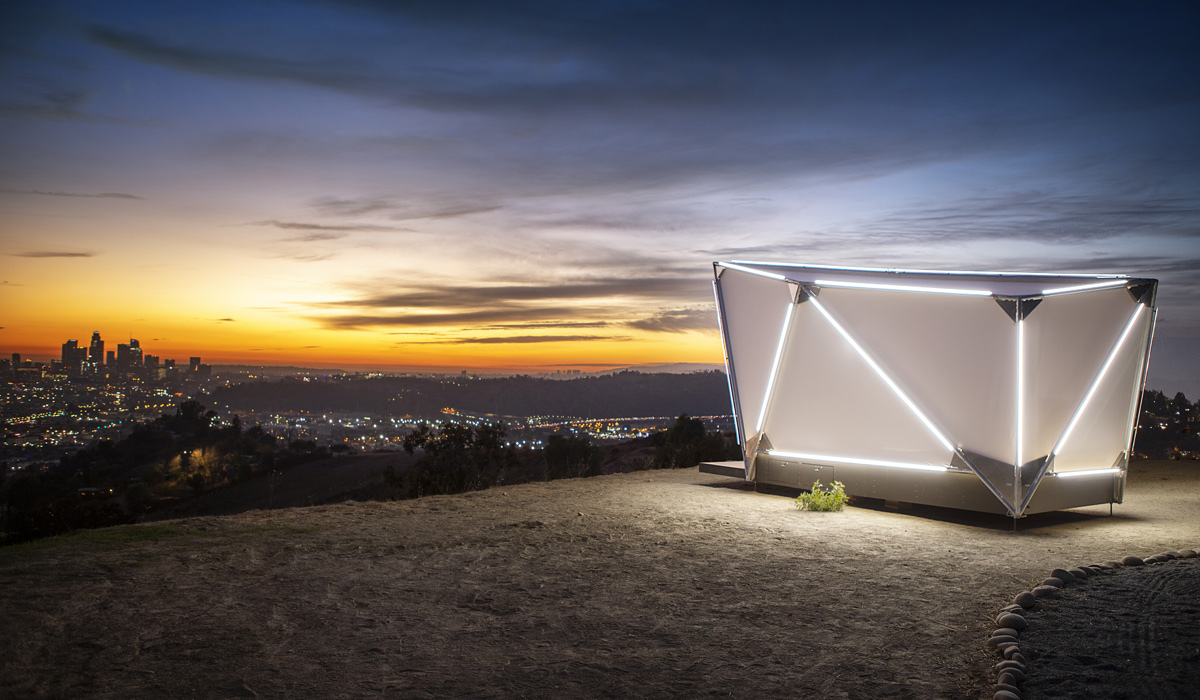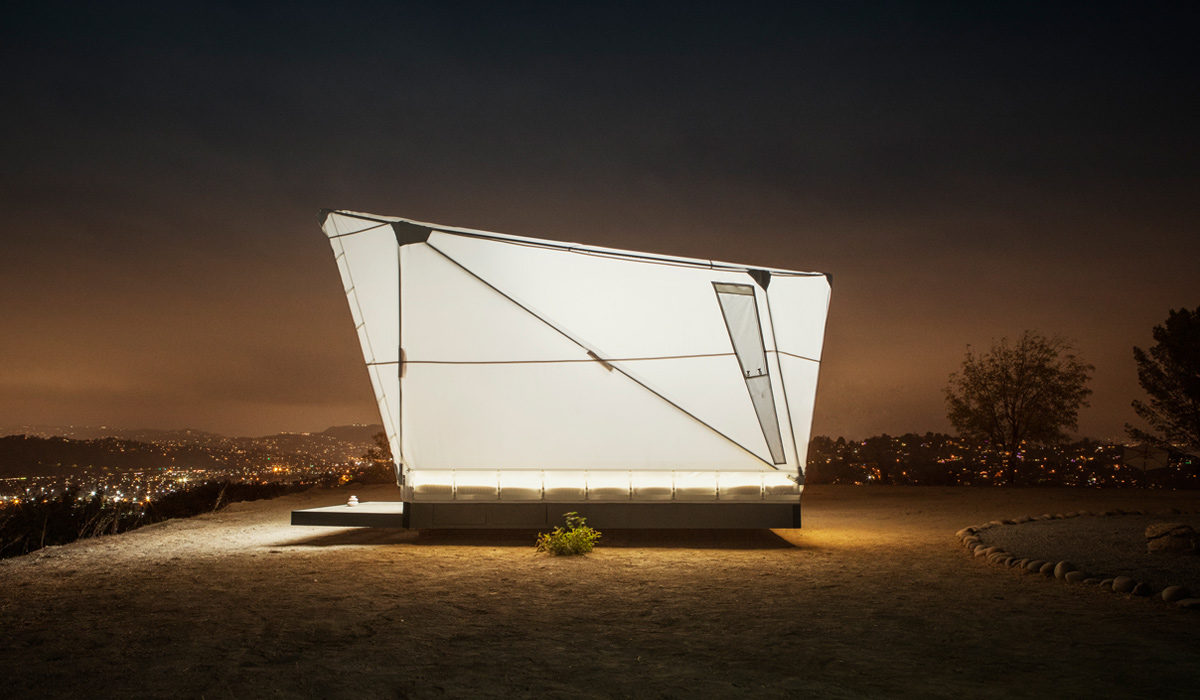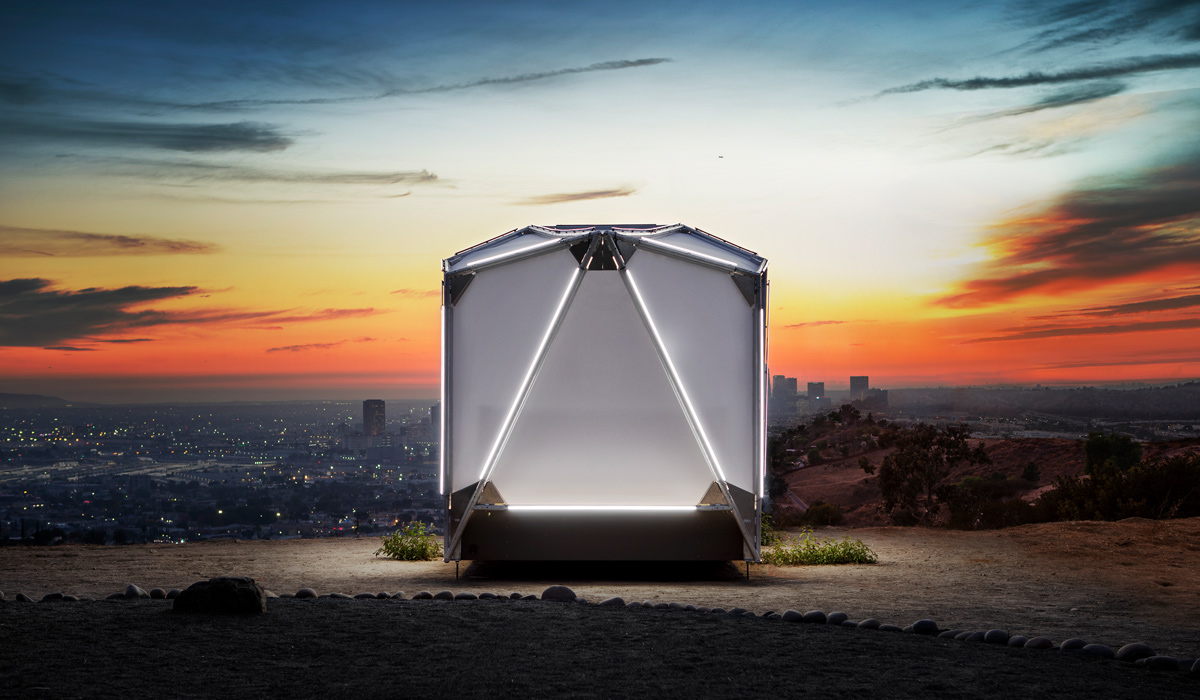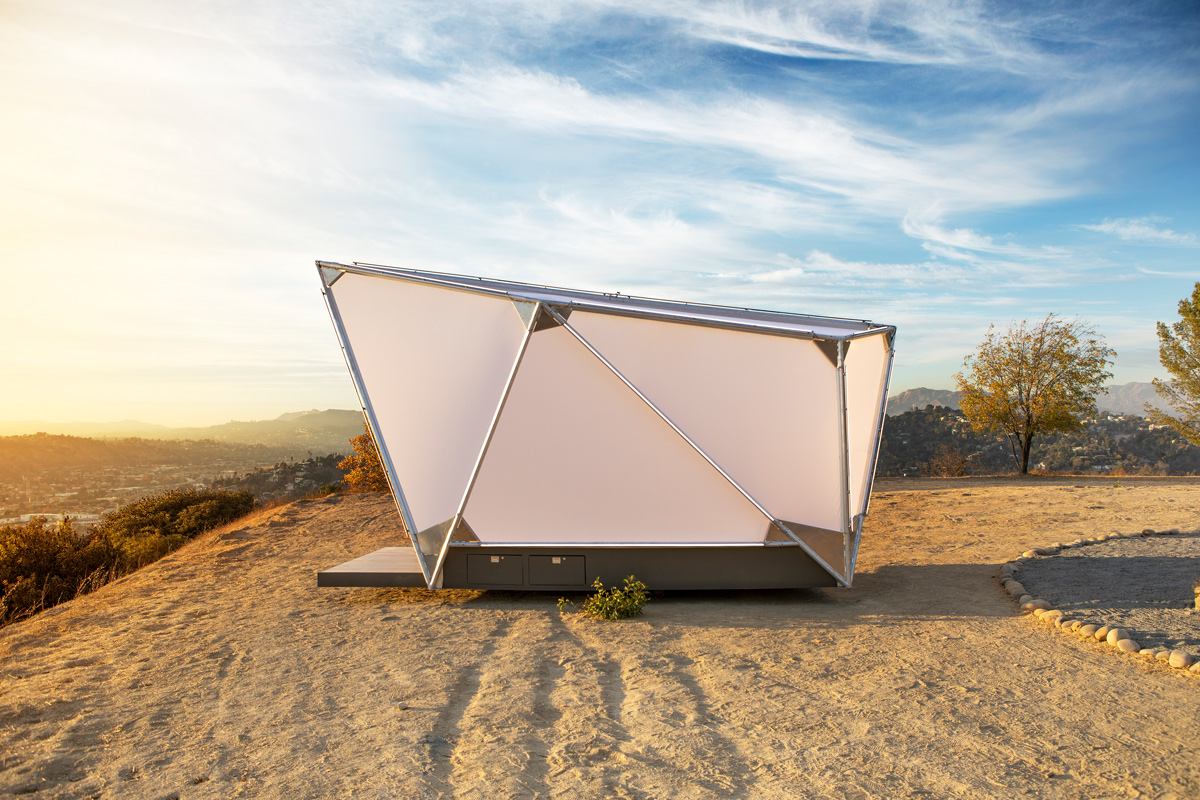Your bare feet sift through cool sand as you enjoy an after-dark walkabout in the desert. Joshua trees and sculpted granite boulders cut other-worldly silhouettes in the staggering celestial display. The air is uncannily still.
Suddenly, you notice a strange glow just beyond a nearby dune. Do you faintly hear music — or are those voices? You crest the dune, and a bizarre shape appears. An 11-foot-tall prism of light, with a pointed prow and a dark foundation on which it seems to levitate. You walk toward it slowly and open the portal to — your home? But wait a minute — this is a spaceship, not a four-season tent!
Actually, it’s neither. The surreal enclosure is a Jupe unit, a 111-square foot, WiFi-enabled, sci-fi-inspired prefab shelter. For the work-from-home nomad and the cosmic voyager inside us all, the future of glamping is here. But Jupe is way more than a tent — that becomes obvious the moment you see it. Come along with us while we explore the next frontier.

Star Child: Birth of the Jupe Unit
Jupe draws its inspiration from the unforgettable black monoliths of 2001: A Space Odyssey.
“We turned to ideas that inspired and excited us,” CEO Jeff Wilson says of Jupe’s beginnings. “Remember that monolith from 2001: A Space Odyssey? It last sent signals to Jupiter from the moon. It seems that a few of those blueprints were bounced back to Earth. We intercepted them and created Jupe.”
Wilson gathered team members with prior experience at SpaceX, Tesla, and Airbnb to drive Jupe’s far-out design. Its mission? To strike a balance between connectivity, nature experience, and inspirational living space. Identifying a rift between traditional camp dwellings (think RVs, tents, or cabins) and modern campers’ high-tech needs, the company builds for functionality and aesthetics.
“Experiencing the natural wonders of the world shouldn’t mean being forced to disconnect while staying in a less-than-inspirational living space,” Wilson says. The first production Jupe unit launched on December 21, 2020. It did not disappoint. Designed for easy transport and shaped to fit anywhere, users are encouraged to take Jupe to the desert, beach, forest, or even the backyard.

Earth to Jupe: Instructions Upon Arrival
So how does this thing work? Jupe arrives in a flat-packed format on its chassis foundation; assembly requires just hours. Fire-resistant canvas stretches between interconnected aluminum masts to frame the unique, luminous shape.
Once assembled, the Jupe unit is a powerhouse. Its innovative chassis contains the wiring, electrical, and mechanical elements of a home. Basically, everything else you’d find in a home is inside. A panoramic front opening welcomes the user. Inside, find cavernous 11-foot ceilings and a floor finished in Baltic birch wood-tile. Not sure where to put your stuff? The floor opens into 38+ cubic feet of storage compartments.
Each unit is furnished with a queen bed (featuring a Nectar mattress), a desk, chair, and ottoman. Upgrades include a patio, Alexa-enabled Sonos Move speaker, locking safe, and solar panels.
If you don’t spring for the solar upgrade, don’t worry about connectivity: Jupe has a 200Ah battery system that drives a WiFi router, four electrical outlets, and USB charging stations, and Jupe’s signature LED lighting (with dimmer switch).
To the skeptic, it sounds like an elaborate kit to introduce into delicate ecosystems. Another concern is exposure to the elements. But Jupe is built for resiliency and resource preservation: Wilson’s team chose materials with durability in mind. Jupe’s makers specifically designed the unit’s chassis and up-sweeping shape to minimize the land impact.

Odyssey: Living the Jupe Life
So is Jupe a glorified four-season tent? A house that comes on a pallet? An esoteric spacecraft designed for our planet by cosmic beings beyond our comprehension?
Jupe takes its form in the eye of the beholder. You can behold a Jupe yourself on the company’s launch tour of California and Nevada, at sites like Joshua Tree, Big Bear Lake, and Yosemite. Or, if you’re ready to take the leap, pre-order your unit for $99. First deliveries roll out in Spring 2021, and the finished unit will cost you $17,500 — pretty cheap for a spaceship.



